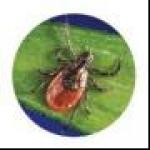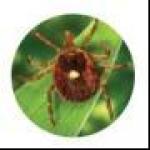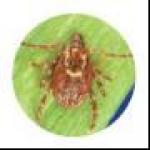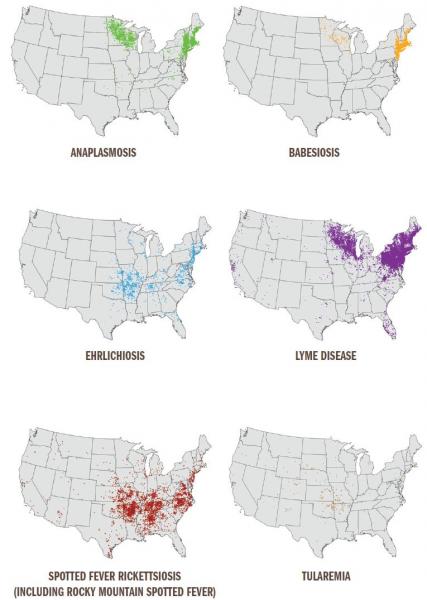Ticks
Ticks

DEER TICK (AKA BLACK LEGGED TICK): Ixodes scapularis
WHERE FOUND: Widely distributed across the eastern United States.
TRANSMITS: Borrelia burgdorferi and B. mayonii (which cause Lyme disease), Anaplasma phagocytophilum (anaplasmosis), B. miyamotoi disease (a form of relapsing fever), Ehrlichia muris eauclairensis (ehrlichiosis), Babesia microti (babesiosis), and Powassan virus (Powassan virus disease).
COMMENTS: The greatest risk of being bitten exists in the spring, summer, and fall in the Northeast, Upper Midwest and mid-Atlantic. However, adult ticks may be out searching for a host any time winter temperatures are above freezing. All life stages bite humans, but nymphs and adult females are most commonly found on people.

LONE STAR TICK: Amblyomma americanum
WHERE FOUND: Widely distributed in the eastern United States, but more common in the South.
TRANSMITS: Ehrlichia chaffeensis and E. ewingii (which cause human ehrlichiosis), Francisella tularensis (tularemia), Heartland virus (Heartland virus disease), Bourbon virus (Bourbon virus disease), and Southern tick-associated rash illness (STARI).
COMMENTS: The greatest risk of being bitten exists in early spring through late fall. A very aggressive tick that bites humans. The adult female is distinguished by a white dot or “lone star” on her back. The nymph and adult females most frequently bite humans.
Allergic reactions associated with consumption of red (mammalian) meat have been reported among persons bitten by lone star ticks.

AMERICAN DOG TICK: Dermacentor variabilis
WHERE FOUND: Widely distributed east of the Rocky Mountains. Also occurs in limited areas on the Pacific Coast.
TRANSMITS: Francisella tularensis (tularemia) and Rickettsia rickettsii (Rocky Mountain spotted fever).
COMMENTS: The greatest risk of being bitten occurs during spring and summer. Adult females are most likely to bite humans.
What are Some Tick Borne Diseases, and Where are they Typically Found?
- See the chart below for Tickborne Diseases Reported to CDC, U.S., 2016.

NOTE: Each dot represents one case. Cases are reported from the infected person’s county of residence, not necessarily the place where they were infected.
For More Information, Click Below:
https://www.cdc.gov/ticks/tickbornediseases/overview.html
Can I have a Tick Tested For Lyme Disease?
- Yes! See how to Here.
Frequently Asked Questions about all things tick related!
Additional Tick Testing Resources

